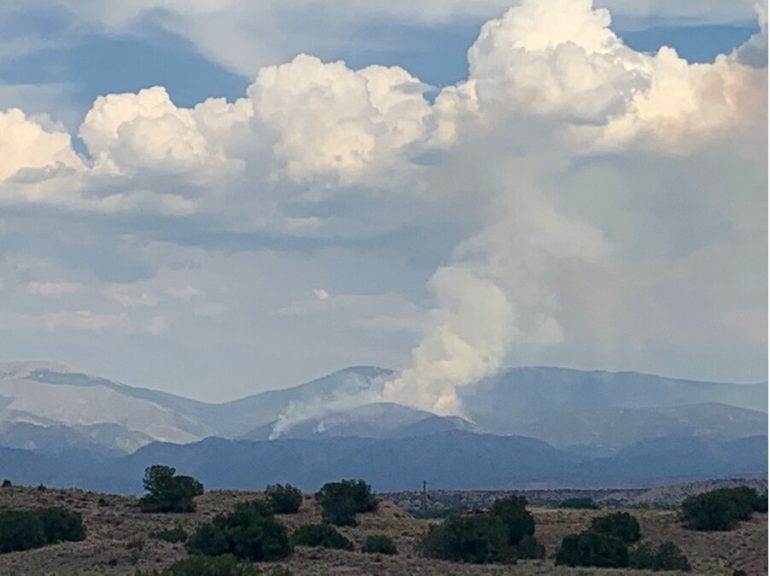A first-of-its-kind instrument that samples smoke from megafires and scans humidity will help researchers better understand the scale and long-term impact of fires—specifically how far and high the smoke will travel; when and where it will rain; and whether the wet smoke will warm the climate by absorbing sunlight.
“Smoke containing soot and other toxic particles from megafires can travel thousands of kilometers at high altitudes where winds are fast and air is dry,” said Manvendra Dubey, a Los Alamos National Laboratory atmospheric scientist and co-author on a paper published last week in Aerosol Science and Technology. “These smoke-filled clouds can absorb much more sunlight than dry soot—but this effect on light absorption has been difficult to measure because laser-based techniques heat the particles and evaporate the water, which corrupts observations.”
The new instrument circumvents this problem by developing a gentler technique that uses a low-power, light-emitting diode to measure water’s effect on scattering and absorbtion by wildfire smoke and hence its growth. By sampling the smoke and scanning the humidity from dry to very humid conditions while measuring its optical properties, the instrument mimicks what happens during cloud and rain formation, and the effects of water are measured immediately. Laboratory experiments show for the first time that water coating the black soot-like material can enhance the light absorption by up to 20 percent.
The instrument will next be tested and the water effects probed in smoke from wildfires sampled at Los Alamos’ Center for Aerosol-gas Forensics (CAFÉ). In addition, the effect of water uptake by soot in polluted air on deep convective storms will be measured at the DOE’s Atmospheric Radiation Monitoring TRACER-CAT campaign led by Los Alamos in Houston next year.
Dubey worked with Christian M. Carrico of the New Mexico Institute of Mining and Technology on a research team that included scientists from Los Alamos, New Mexico Tech, Michigan Technological University, and Aerodyne Research, Inc. The novel findings of experiments were performed by the Los Alamos Director’s postdoctoral fellow Kyle Gorkowski and Department of Energy graduate awardee Tyler Capek.
Study finds less impact from wildfire smoke on climate
More information:
Christian M. Carrico et al, Humidified single-scattering albedometer (H-CAPS-PMSSA): Design, data analysis, and validation, Aerosol Science and Technology (2021). DOI: 10.1080/02786826.2021.1895430
Provided by
Los Alamos National Laboratory
Citation:
Probing wet fire smoke in clouds: Can water intensify the earth’s warming? (2021, March 29)
retrieved 29 March 2021
from https://phys.org/news/2021-03-probing-clouds-earth.html
This document is subject to copyright. Apart from any fair dealing for the purpose of private study or research, no
part may be reproduced without the written permission. The content is provided for information purposes only.
